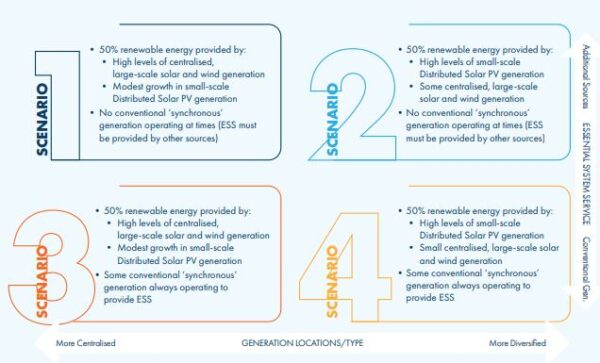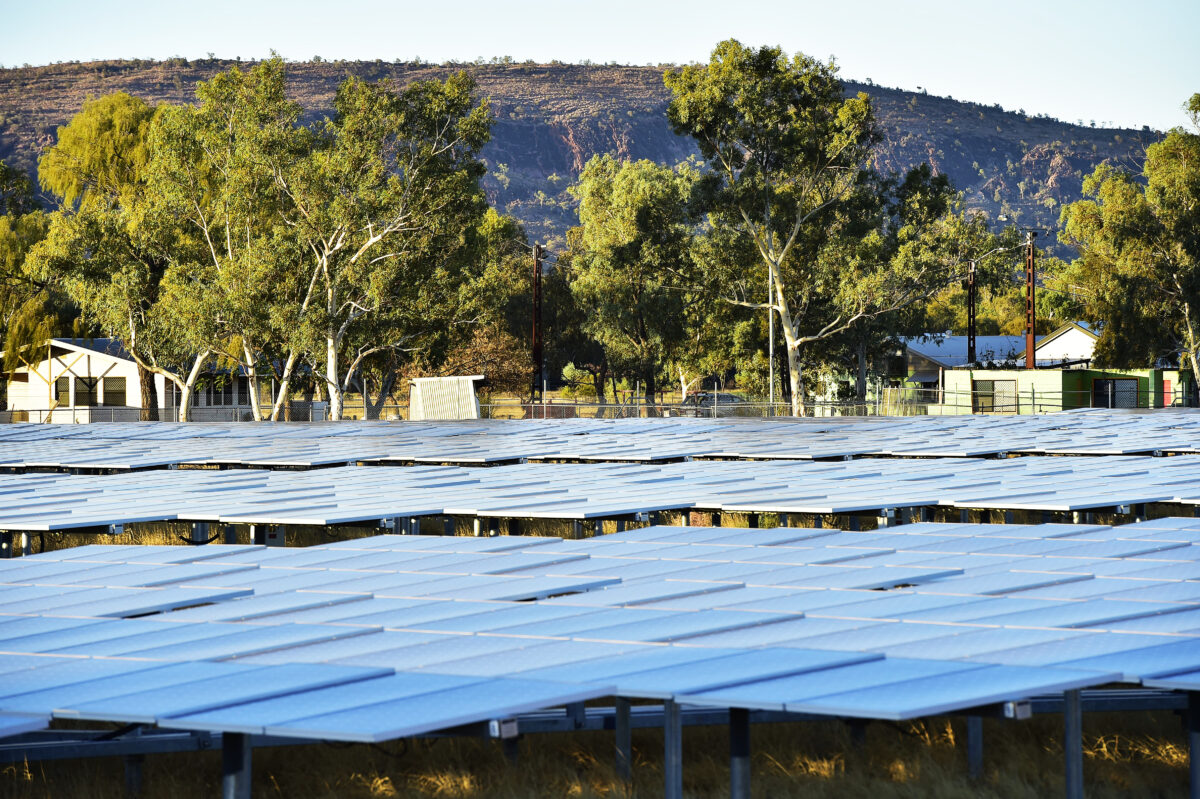The three-year Alice Springs Future Grid project has culminated with the release of the Roadmap to 2030 report that warns the Northern Territory town’s remote, isolated power system is fast approaching critical threshold points where ‘business as usual’ is no longer tenable.
“As the system transitions to a future of much higher proportions of variable renewable energy sources, such as solar and wind-based generation, a ‘step change’ transformation of the power system is involved to address the significant risks that emerge,” the report says.
The Alice Springs Future Grid project, led by the Intyalheme Centre for Future Energy, said the current power system was designed for conventional energy generation from diesel and gas, but the growing input of rooftop solar systems, currently estimated to be 23 MW, is leading to increased system volatility with instantaneous renewable contribution exceeding 80% on a regular basis.
“If this continues without necessary upgrades, the reliability of the service will be at risk. And this is just to adapt to current levels of solar input, let alone to account for renewable levels of 50% and higher,” it said.
Alice Springs already has approximately 13% renewable energy generation, including 9% household-generated solar but faces unique challenges in overcoming system strength issues to serve approximately 26,500 people, with communities as far as 130 kilometres from the town.
The report indicates that if distributed energy resources, such as rooftop solar generation, continue to grow at high levels, system minimum demand would fall below the level it was designed to operate at as soon as 2025.
Future Grid Project Director Lyndon Frearson said the roadmap recognises the challenges and accepts that changes must be made and provides plausible pathways to the future.
“The challenge for Alice Springs is not just its remoteness, but also the lack of alternative energy sources meaning that 50% renewables requires frequent operation of the power system at, or near, 100% instantaneous renewables,” he said.

The Alice Springs Roadmap to 2030 report provides four possible pathways to upgrade the system for a decarbonised future, exploring different variables in the amount of central or decentralised renewable energy assets, and different operating modes for the existing gas generators. It also outlines the next best steps for cross-sector stakeholders, including three key phases of transition.
Regardless of the scenario, the report shows that achieving the transition to a 50% renewable energy power system requires investment with modelling suggesting up to $216 million sourced from private and public investors will be required.
“Decarbonising a conventional power system while maintaining system reliability and customer service quality requires many areas of consideration and significant investments in a range of new technologies,” the report says, noting that given the issues currently emerging in the Alice Springs power system, the execution of the first phase “must be advanced with urgency.”
The first phase calls for the deployment of large-scale grid-forming battery energy storage systems; allowing the system operator to use the technical capability inherent in many inverters to limit excess capacity from rooftop solar being exported to the grid at critical times; and the connection of new bulk loads that have potential to slow the impact of declining system demand.
Desert Knowledge Australia Chief Executive Officer Jimmy Cocking said the roadmap makes it clear the system has to change but said key to delivering that change will be collaboration between stakeholders.
“The challenges we are facing as we move towards our goal of 50% renewable energy by 2030 are system challenges, and any solutions need to be system solutions,” he said.
“All the key players in the energy system, including consumers, worked together in new and inspiring ways as part of Alice Springs Future Grid, and this must continue if we’re to meet the challenges ahead.”
Frearson said the 72-page roadmap will not only support the town’s ‘future grid’ but the lessons learnt will be valuable for larger interconnected grids such as the National Electricity Market (NEM), Southwest Interconnected System (SWIS) and the Darwin-Katherine Interconnected System (DKIS).
“We think the roadmap is a seminal piece of work that we hope many will be able to see and utilise both for the future of the Alice Springs power system but importantly for the future of power systems across the Territory and the rest of Australia,” he said.
The Alice Springs Future Grid project was led by the Intyalheme Centre for Future Energy on behalf of Desert Knowledge Australia (DKA), with project partners Ekistica, CSIRO, Power and Water, Territory Generation and Jacana Energy. It received funding from the federal and Northern Territory governments.
This content is protected by copyright and may not be reused. If you want to cooperate with us and would like to reuse some of our content, please contact: editors@pv-magazine.com.









By submitting this form you agree to pv magazine using your data for the purposes of publishing your comment.
Your personal data will only be disclosed or otherwise transmitted to third parties for the purposes of spam filtering or if this is necessary for technical maintenance of the website. Any other transfer to third parties will not take place unless this is justified on the basis of applicable data protection regulations or if pv magazine is legally obliged to do so.
You may revoke this consent at any time with effect for the future, in which case your personal data will be deleted immediately. Otherwise, your data will be deleted if pv magazine has processed your request or the purpose of data storage is fulfilled.
Further information on data privacy can be found in our Data Protection Policy.